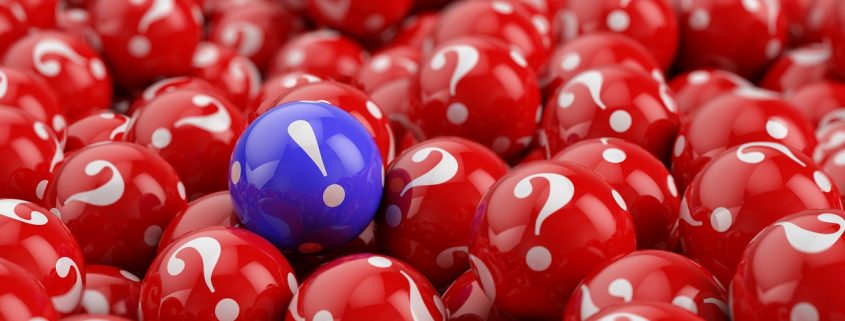Sample Member Q&A’s
Here at Factor, we receive so many great questions covering Risk Management, Trade Management, Classical Charting Principles, The process of Trading, and the Human Aspect of Market Speculation. As followers of our public blog, we wanted to share just a handful of these Q&A’s with you.

Answer: A continuation graph plots the price of the “front” or nearest futures contract on a rolling basis. I use several types of continuation charts – each different based on when the chart rolls from the nearby contract to the next contract.
-055 – rolls on the first day of the expiration month
- -056 – rolls at expiration
- -057 – rolls based on volume and open interest (plotting the contract with the most liquidity)
- I do not think one variety is necessarily the best – I attempt to identify the version that most clearly explains price action
- I am adamantly opposed to back-adjusted charts that attempt to “fill in” the price difference between an expiring contract and the subsequent contract
There are several things a trader needs to understand about continuation graphs.
- Continuation graphs provide a larger perspective of market trends. For example, the Dec Cotton contract had limited trading history.
- Continuation graphs of ag markets (especially perishable commodities) and markets with large carrying-charge or inverted structures can be very misleading.
- More often than not the daily graph will provide a similar or confirming chart pattern to the continuation chart.
- Trades are made in individual contract months. When the chart of an individual contract month does not support a trade signal of the continuation graph I skip the trade.
- When both the continuation and individual contract month chart suggest a similar narrative, a leading breakout by the continuation graph adds credibility to the trade.

- H&S, right-angled triangles and rectangles
- Extremely well-defined boundaries with little or no “spindle” confusion
- 12- to 26-weeks in length
 (About turning $50,000 into $1,000,000) You are very critical of the promoters of trading systems and training programs that offer promises of huge profits. I share your criticism. Yet, surely you know some traders who have turned $50,000 into $1,000,000 in a matter of a few years. If so, how did they do it?
(About turning $50,000 into $1,000,000) You are very critical of the promoters of trading systems and training programs that offer promises of huge profits. I share your criticism. Yet, surely you know some traders who have turned $50,000 into $1,000,000 in a matter of a few years. If so, how did they do it?
Answer: I personally know some traders who have achieved this type of profitability. Yet, there are some things all aspiring traders need to understand about 10-fold and 20-fold profitability. First, I know no trader who has achieved this level of profitability with a system or trading approach. Such levels of profitability come from ultra-leverage in very substantial and sustained one-off trends – not by applying day trading techniques learned from a $3,000 trading video. Second, the leverage and risk taken to achieve this level of profitability represent a two-sided coin. I cannot recall a single trader who has achieved a 10-fold or 20- fold return during less than a five year period who has not also experienced at least one 50% drawdown in the process. Herein lies the dilemma – and a question. If you, as a trader, ran a $50,000 account into $1,000,000, then experienced a drawdown back to $500,000, which frame of mind would you have:?
A. You just made $450,000 – what a fabulous thing
B. You just lost $500,000 – what a bummer
There is another dimension to a 10- or 20- bagger that I must mention. A big trading score requires far more than the desire to make it happen, perseverance, incredible patience, discernment, boldness and the right trading tactics. It requires the right markets at the right time in a trader’s career – and that is largely a function of luck. Without the intervention of providence no amount of desire/boldness/trading tactics will make it happen.

Answer: Great question. I am highly data driven and believe the data I have collected on my trading performance over the years is a small gold mine. The metrics I maintain include (but are not limited to) the following.
- 3 – and 1 – year Gain-to-Pain rations
- 3- and 1-year RORs
- Annualized worst drawdowns
- 3- and 1-year Calmar ratios
- Win rate
- % of trades constituting the bottom line
- 3- and 1-year average win size to loss size ratios
These are the metrics I believe really matter to performance outcomes.

Answer: Even though I have based my trading on classical charting principles since 1980, the tactical aspects of my trading have evolved over time. There are several areas of my trading today that are modified vs. 2011 – the year “Diary” was published.
Trading frequency – Back in the 1980s and early 1990s I typically made 25 to 30 trades per month. At the time “Diary” was published, my monthly trading frequency had declined to 15 to 20 trades per month. My present goal is to enter no more than 10 trades per month.
Pattern Selection – My focus is on horizontal patterns. While I will trade an occasional symmetrical triangle or wedge, these patterns must meet additional criteria.
Pattern Duration – At the time of “Diary,” I considered patterns of 4 to 10 weeks in length. My focus now is on patterns 10 to 20 weeks in duration. I will trade a smaller pattern if it is part of a larger pattern – either as a launching pad or continuation pattern.
Trade Management – I am much less likely to retain my initial stop levels. I make every attempt to as quickly as possible move a trade to a breakeven proposition.
Factor Membership
Factor Members enjoy a monthly live Q&A session with Peter Brandt. They’re also encouraged to send in their questions at any time. The Factor maintains a database of these member Q&A’s on the website so all members can learn from this interaction.
Factor Membership is available and you could consider your membership in the Factor Service as just one more trade. If the Factor Service is not of value to you, well, it is just one more trade that did not work. Through the Factor Service I endeavor to alert novice and aspiring traders to the many pitfalls you will face – and to offer advice on overcoming those pitfalls. My goal is to shoot straight on what trading is all about. For more information watch my 30 minute webinar where we cover the Factor service in depth.
I hope you will consider joining the Factor community.







